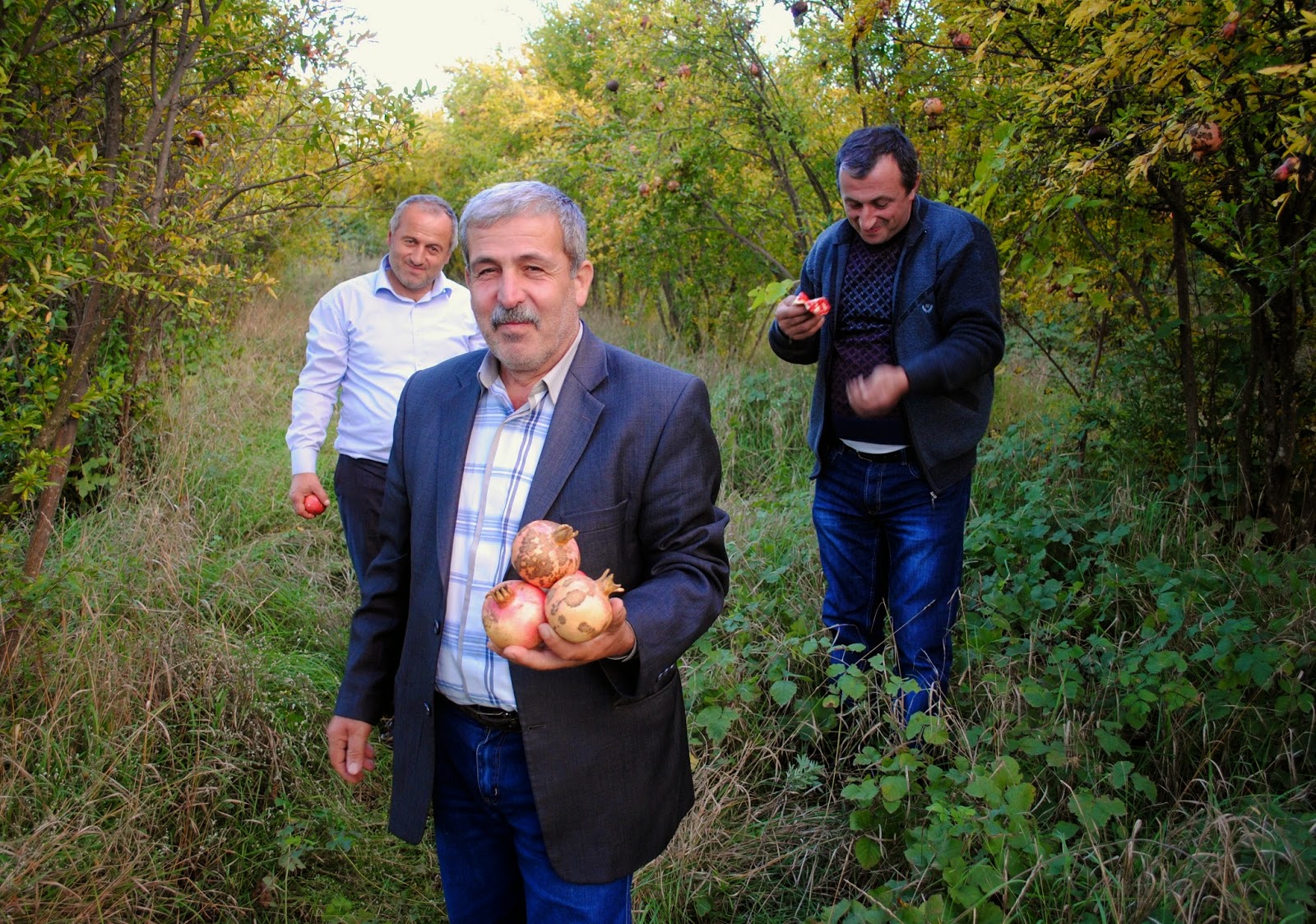It is a mid-October sunny afternoon and we leave Djudjevan with Levon B.
and his father to go and visit some pomegranate orchards in two villages located
at the North-West of Noyemberian. Levon belongs to the very small club of
philosophers who are also… pomegranate growers. We cross Berdavan, its peach
orchards and vineyards with their warm autumn colours.
Levon’s father explains
us that there are some lands on the Georgian side of the upper Debet Valley,
just in front of us, where the soil and subsoil are under Georgian jurisdiction
whereas the trees that grow on it are under Armenian jurisdiction. We arrive in Bagratashen, our
first destination. The mayor introduces us to a group of fruit growers
who decided to join their efforts to set up a fruit drier. There is one room in
which four women are pealing pears. And next, there is a cold room with plastic
bags full of delicious dried peach, plum, pear slices. Some of them are
exported to Italy. We try some and then discuss around a cup of coffee. Our
discussion revolves around dried arils, Spanish pomegranate cultivars,…
Valer, who comes from Azerbaijan, has a pomegranate orchard of 1 ½
hectares and cultivates a variety that comes from Goychay, a district in Azerbaijan where there is a
long pomegranate tradition. The fruits seem to be large, red, not too sweet and
with hard seeds. He started a decade ago but he is unable to show us any of the fruits
because most of his trees got frozen during the last winter. He is waiting for
them to recover.
Micha is another fruit producer from Bagratashen. He
grows 2 hectares of pomegranates and has 4 or 5 different varieties, some
Armenian ones and others from Azerbaijan, some of his trees being 17 years old.
We take the car and drive across Diospyros
kaki orchards planted in this peninsula surrounded by Georgian territory.
He has planted several hectares of kaki. He waters them. His neighbour, a
priest, has an olive tree plantations. There are also mulberry, fig, apricot
trees here and there, taking advantage of the rich local soil and the southern
exposition.
Micha first shows us an Armenian variety that is rather small,
yellow/white outside and red inside. Delicious!
He then shows us a small
variety from Azerbaijan that is red outside, red inside, has large seeds and is
delicious too. Its name is Ganja (Gandzak in Armenian), referring to an area in Azerbaijan.
We then drive west, following the Debet valley, to the
next village: Debedavan.
Here again, the mayor was expecting us. He explains us that the village has a
total of approximately 2 hectares of pomegranate trees. On his shelf, there are three red pomegranates. They are red inside, juicy, sweet sour, average size
and he tells us that they have had it for a long time in the village. We then
visit with him one of the orchards, not too far from his office. The fruits are
yellow-pink and nicely red inside. The arils seem to detach themselves so
easily. They fall in our hands as we open the fruits. Sweet sour again and we
all exit the orchard with very sticky hands.
On our way back to the car,
another villager brings us a fruit of the Gandja/Gandzak variety, the
same as the one we saw in Bagratashen. He insists on the fact that the skin
inside is pink, not simply white. The sun is slowly going down and we drive
back home after a happy afternoon, our mouth full of flavours.












Aucun commentaire:
Enregistrer un commentaire